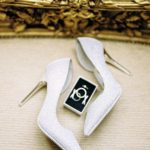 Permanent make-up is a fairly new trend to enter the beauty world.
Permanent make-up is a fairly new trend to enter the beauty world.
According to Wikipedia, it is “a cosmetic technique which employs tattoos (permanent pigmentation of the dermis) as a means of producing designs that resemble make-up, such as eye-lining and other permanent enhancing colours, to the skin of the face, lips and eyelids. It is also used to produce artificial eyebrows, particularly in people who have lost them as a consequence of old age, disease or a genetic disturbance; to disguise scars and white spots on the skin; and to restore or enhance the breast’s areola after breast surgery”.
There are different methods for different types of permanent make-up application. Embroidery is the hand method, then you have the rotary machine method and, lastly, the coil method, which is similar to tattooing. Tattooing on the face isn’t recommended, as the pigmentation goes down too deep into the skin, and you can hit a lymph node and get streaking.
Janine Henning is a permanent make-up artist. She has been in this business for about ten years, and got involved in permanent make-up after completing her beauty course. She had become interested in permanent make-up and went on to complete a course. “It is a very creative career and my dream job,” says Janine.
Basics
A permanent make-up artist is also known as a permanent make-up specialist and can earn good money, according to Janine. The average salary is about R8 000 a day. The average price for one treatment, such as eyeliner, is R800.
Job description
You apply permanent make-up, which involves placing a layer of colour underneath the skin that lasts for a very long time. The colour can be applied to lips and eyelids, as well as to skin with scarring.
Pros and cons
“The cons,” says Janine, “are that it is a risk. You have to be very careful, because you can go skew and it’s close to the eye. On the lips, you can get fever blisters.”
“The pros are that you permanently have colour on and look good, and it’s a very popular procedure.”
Required studies and experience
Janine studied at Instrinctic in Sandton, where she completed a one-week course that covered several case studies. She says, “You should do a course that gives you proper training, not just a one-day crash course”.
You have to have your diploma in aesthetics, or have a medical background, before you can enter the course, so that you know how certain types of skin will react to the product. You also need experience with 50 clients, in order to receive your certificate.
Personality types
For this career, you must be able to convince people to look their best and not let them tell you how they want to look, because they could end up looking like a clown, if they chose something extreme. Janine also recommends encouraging clients to enhance their own looks and not to go for too heavy a look.
An average day
“In a beauty line like this, it is very seasonal. I do more work in the holidays and on weekends, as it takes three days to recover. The actual procedure can take about one and a half hours. The anaesthetic takes about 20 minutes and the treatment takes about 40 minutes to an hour. You apply the local anaesthetic to numb the top layer of skin and then you use a different anaesthetic that goes deeper into the skin, just before you start the procedure. You also have to do two touch-ups after the initial treatment, as this puts the colour deeper into the skin and makes sure it won’t fade too much,” says Janine.
The best thing about the job
“It is very satisfying, and people are very happy with the lovely results,” smiles Janine.
The worst thing about the job
“If someone tells you, ‘I’m blind in the one eye, please don’t stick the needle in the other one’ and weird requests,” laughs Janine.
Ungenita Prevost
Beauty Empowerment Author/Speaker & Success Coach
Increase Your Net-Worth, with a High Self-Worth.TM
Go From Frazzled To Fabulous Now!




